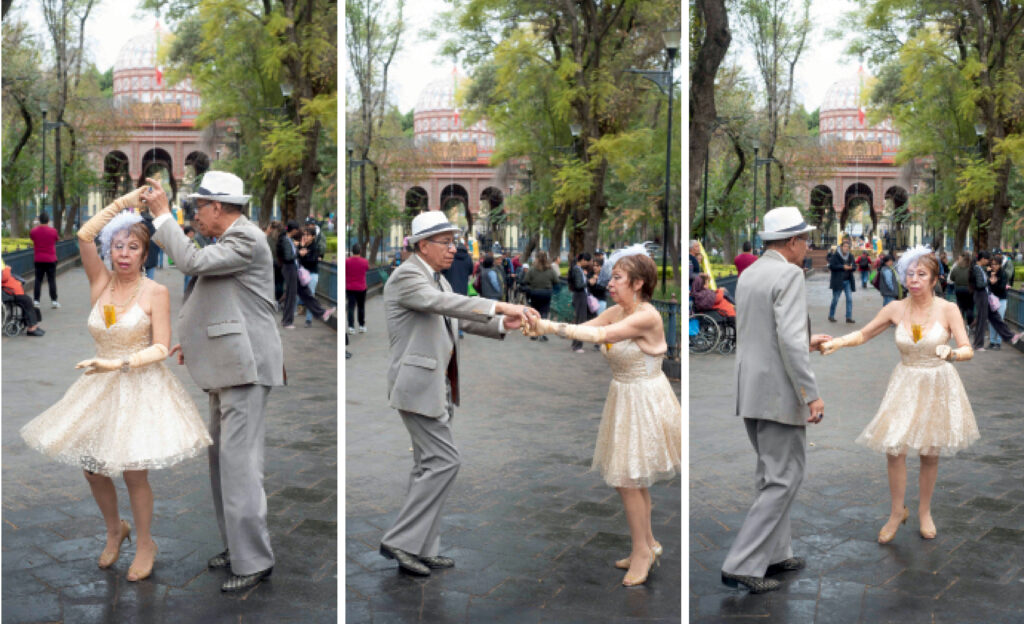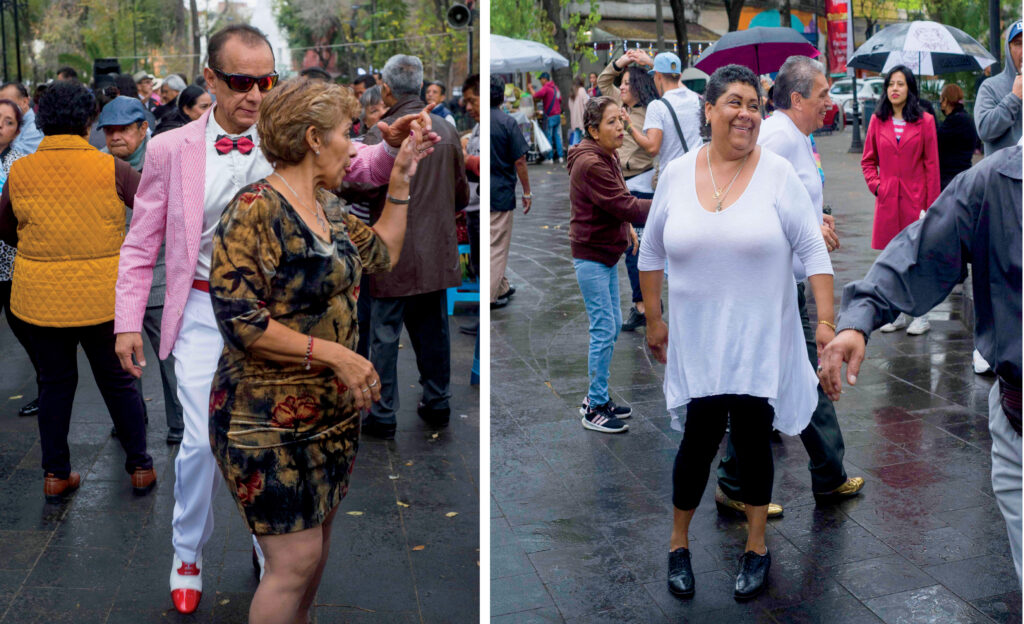This article is adapted from AQ’s special report on Latin America’s ports
Photographs by Víctor Benítez
MEXICO CITY — A year ago, Sandra Cuevas was riding high.
As mayor of Mexico City’s iconic Cuauhtémoc borough, she had gained a reputation as a vigorous enforcer of the law—marking a contrast with President Andrés Manuel López Obrador’s “hugs, not bullets” attitude to questions of public order.
Clad in police gear and trailed by borough employees, Cuevas patrolled her district on a quad bike, taking down unlicensed pandemic-era terraces built out on the streets. Hammers smashed and chainsaws buzzed as much of the citizenry cheered. It finally felt that the local government was enforcing the letter of the law—and ruthlessly. Many of her opponents began to worry about the mayor’s rise, and even call her a threat to Mexican democracy.
True, people were rubbed the wrong way when she ordered food stands to replace their colorful stencil-drawn signs with the borough’s drab pale gray logo. Still, most complied. Few wanted to mess with the powerful mayor from the opposition coalition.
But then, in February of last year, she picked a fight with the wrong crowd—namely, a group of mostly elderly dancers. Seeking to oust them from the plaza where they’d staged weekly dances for years, Cuevas overplayed her hand and yielded control of one of her borough’s most iconic public squares. The episode showed how Mexican politics is often determined just as much by who best occupies its streets as by who holds official power—and it has hung over Cuevas as she seeks to continue her political career on the national stage.

A crusading borough mayor
The central plaza of the Santa María la Ribera neighborhood is, like many of the city’s public spaces, a place where people gather to participate in a range of activities free of charge. On one edge of one square, you might find a rap battle, on another an ensemble of Brazilian drummers, and on another a roller-skating class. Mexico City is one of the most expensive cities on Earth—particularly if one takes into account local purchasing power. That means its citizens, often crammed in crowded households, depend on public spaces as essential spaces for personal expression.

The southeastern corner of the Santa María la Ribera plaza is reserved for the dancers. Some are lavishly dressed. Most are well past their 60s. An unseasonable rain fell the day I went, but Joel Alejandro García Flores—the event’s organizer and DJ—laughed at the idea that this might disrupt the day’s dancing. “A bit of rain won’t put them off,” he said. By his reckoning, this sonidero—or outdoor dance party—has been gathering there every Sunday for the past 13 years, playing cumbias, salsa, and son cubano.
That is, until a year ago when Cuevas ordered the end of the dancing. The sonidero resolved to disobey. They felt their physical presence in the square helped them lay claim to it.
“We were beaten by … goons when we held protests,” said a 70-something dancer named Armando. He and his partner Lupita are the star couple of the plaza, where they are known only by their first names. While Cuevas had government funds at her disposal to organize “her own concerts,” Armando said, most of their group’s dancers trekked in from poorer parts of the city, soda bottles and a spot of lunch in tow, to revel on the streets for free. To Armando, the matter came down to one privileged and powerful neighbor—Cuevas herself, whose home overlooks the square—who didn’t like the noise.

The dancers mobilized legally and politically. For ages, authorities had been sitting on the paperwork to protect the city’s sonideros by declaring them an Intangible Cultural Patrimony under UNESCO guidelines. The organizers of the Santa María la Ribera sonidero said after some lobbying, the central Mexico City government spotted an opportunity to gain ground in their turf war with the borough mayor, a political opponent. By October of last year, city Mayor Martí Batres—a close ally of AMLOlo-anointed presidential frontrunner Claudia Sheinbaum—officially protected sonideros across the city. Cuevas’ campaign to control public space was stopped in its tracks.

A year has passed since the showdown, and Cuevas is now running for the Senate with the Movimiento Ciudadano opposition party. But the squabble in Santa María la Ribera still follows the now-senatorial candidate around. Cuevas is now widely seen as a politician who is untroubled by the use of hard-handed tactics to get her way. High-profile names, like veteran social-democratic politician Patricia Mercado, dropped out of the Movimiento Ciudadano’s campaign when Cuevas joined their ranks. Cuevas’ excesses, prior and subsequent, have been widely noticed, but the victory of the sonidero over the mayor was the first time she was decisively defeated—taking the wind out of her sails and, arguably, resulting in her decision to join a locally weak party to continue her political career.
“We reaffirmed that this is a citizen space,” García Flores, the sonidero’s DJ, said before using his microphone to publicly thank the human rights observers in their distinctive vests for “looking out for us like they do every Sunday.”
The sweet sound
Emboldened by their victory, it felt like the dancers took even fuller control of the plaza. On one hand, they were a model of self-governance. Apart from the noise, Cuevas had claimed that the sonidero was an excuse for boozing and drug sellinga claim the dancers vehemently deny. Unwilling to give the borough authorities any excuses, law enforcement has been virtually taken over by the sonidero organizers across their little patch of plaza. I witnessed the results firsthand.
The music came to a sudden halt mid-song. The dancers booed, and heads turned. García Flores’ voice boomed over the powerful makeshift sound system. “You—yes, you,” he said. “The music is not coming back on until the man in the white baseball cap leaves.” The man slinked away, and the music was allowed to resume: He had been caught drinking.
The sonidero’s very localized authority does seem to come with a flipside. “I feel stronger (since defeating Cuevas),” Ivonne Cruz, another organizer, shouted into my ear. The music, streaming out of large megaphones set up by the sonidero, was deafening. Cruz said that the neighbors never complain, but after a year of glowing media coverage and witnessing the display of octogenarian street politics, it seemed unlikely that anybody might dare to speak out.
Just across the road, one of Mexico City’s traditional organ grinders held out her hat to passersby for a coin. Her music was barely audible. “Ever since they won, it’s been louder than ever,” she told me. “This isn’t even as loud as it gets,” a waitress at a local café told me. “It can get a bit overwhelming.” Political power at its loudest.
—
González Ormerod is a Mexico City-based writer and historian of Latin America, and the founder of The Mexico Political Economist newsletter
Tags: Mexico City

)



